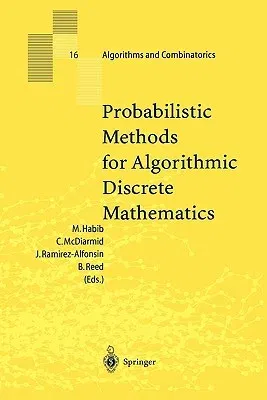Leave nothing to chance. This cliche embodies the common belief that
ran- domness has no place in carefully planned methodologies, every step
should be spelled out, each i dotted and each t crossed. In discrete
mathematics at least, nothing could be further from the truth.
Introducing random choices into algorithms can improve their
performance. The application of proba- bilistic tools has led to the
resolution of combinatorial problems which had resisted attack for
decades. The chapters in this volume explore and celebrate this fact.
Our intention was to bring together, for the first time, accessible
discus- sions of the disparate ways in which probabilistic ideas are
enriching discrete mathematics. These discussions are aimed at
mathematicians with a good combinatorial background but require only a
passing acquaintance with the basic definitions in probability (e.g.
expected value, conditional probability). A reader who already has a
firm grasp on the area will be interested in the original research,
novel syntheses, and discussions of ongoing developments scattered
throughout the book. Some of the most convincing demonstrations of the
power of these tech- niques are randomized algorithms for estimating
quantities which are hard to compute exactly. One example is the
randomized algorithm of Dyer, Frieze and Kannan for estimating the
volume of a polyhedron. To illustrate these techniques, we consider a
simple related problem. Suppose S is some region of the unit square
defined by a system of polynomial inequalities: Pi (x. y) o.


